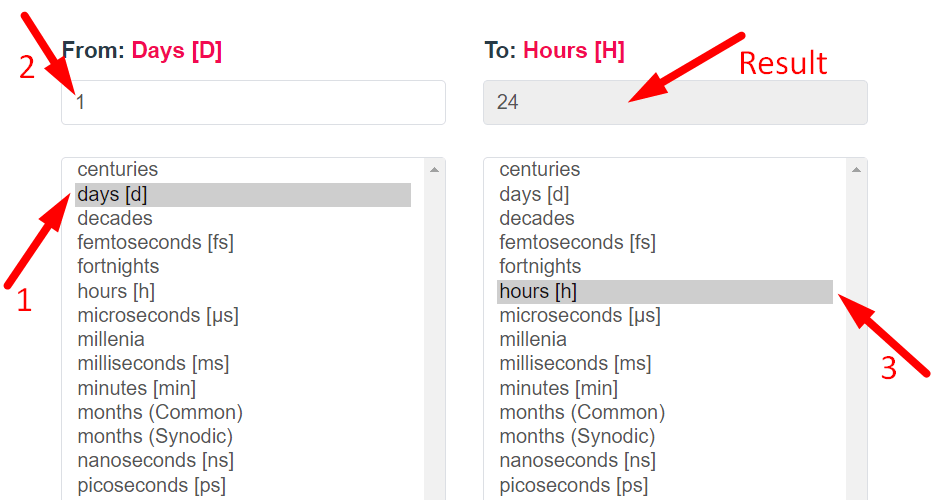Time Converter
Time Unit Conversion - converts centuries, days, decades, femtoseconds, fortnights, hours, microseconds, millenia, milliseconds, minutes, months, nanoseconds, picoseconds, quarters, seconds, shakes, weeks, years etc.
From: centuries
To: centuries
How to use this Time Converter Tool?
How to use Yttags's Time Converter?
- Step 1: Select the Tool

- Step 2: To perform a Time Converter, walk through the steps below:
- Select the unit of the From(source).
- Enter the From(source) value into the box at the top left.
- Select the unit of the To(target).
- The Time Converter is automatically performed and the result is displayed at the right-hand side.

Units of measurement
Conversion units for the Time Converter
centuries, days [d], decades, femtoseconds [fs], fortnights, hours [h], microseconds [μs], millenia, milliseconds [ms], minutes [min], months (Common), months (Synodic), nanoseconds [ns], picoseconds [ps], quarters (Common), seconds [s], shakes, weeks, years (Common) [y], years (Average Gregorian), years (Julian), years (Leap), years (Tropical)
If you want to link to Time Converter page, please use the codes provided below!

FAQs for Time Converter
How Many Time Zones Are There In The World?
There are 24 time zones in the world, each approximately 15 degrees of longitude apart, to account for the Earth's rotation and the 24-hour day.
Which Organizations Regulate Time Zones?
The International Bureau of Weights and Measures (BIPM) and the International Telecommunication Union (ITU) are the organizations responsible for regulating time zones and coordinating global timekeeping standards.
What is Daylight Savings Time?
Daylight Saving Time (DST) is the practice of moving the clock forward by one hour during warmer months to extend evening daylight. This is done to make better use of natural daylight and reduce the need for artificial lighting in the evenings.
What Are GMT And UTC?
GMT (Greenwich Mean Time) and UTC (Coordinated Universal Time) both serve as time standards. GMT is based on the mean solar time at the Prime Meridian (0° longitude) in Greenwich, London. UTC is a more precise and scientifically determined time standard, which accounts for leap seconds and is closely aligned with GMT but may differ by a few milliseconds.